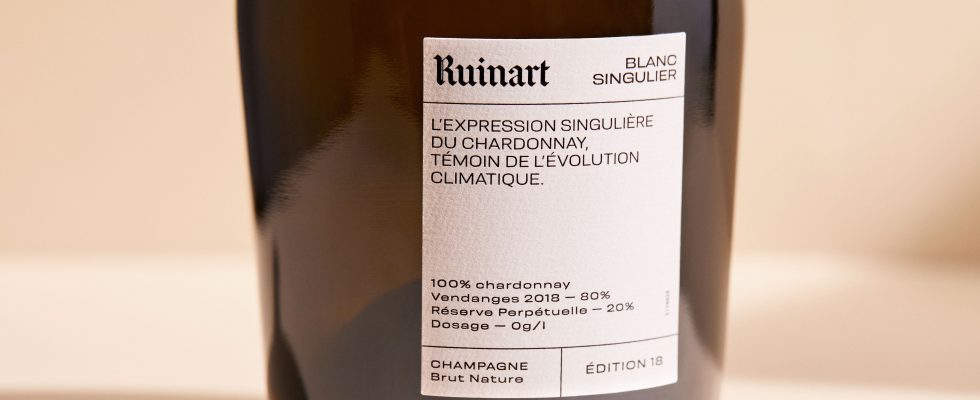Emblem of the Ruinart house, will the famous Blanc de Blancs disappear one day, victim of climate change? To say so seems premature. So far, the rise in temperatures has favored the Champagne region. “Never have the local winegrowers had such beautiful grapes, whereas in the past, they often had maturity problems,” confirms Philippe Bidalon, columnist and President of the Movis association, bringing together journalists specializing in wines. and spirits.
However, the Ruinart house, owned by the LVMH group, is indeed preparing a successor to its iconic champagne. It even already has a name: Blanc Singulier, the first vintage of which, produced in 2018, has just been released. “This could be the Blanc de Blancs of tomorrow,” warns Frédéric Panaïotis, cellar master of the house. And for good reason: due to climate change, making the same Blanc de Blancs every year will undoubtedly become more and more difficult.
“For some time now, when tasting basic wines [NDLR : ceux qui serviront ensuite à l’assemblage], our teams detect an evolution in the aromatic profiles of certain Chardonnays. In warm years, with their greater maturity, they move away from the style of the house. These profiles, today anecdotal in volume, are becoming more frequent, and concern more and more plots. We can imagine that these Chardonnays will become the norm in the long term, if the climate continues to evolve. However, they do not constitute the raw material that we are looking for to develop, with our current know-how, the Blanc de Blancs that you know”, we confide at Ruinart.
Frédéric Panaïotis confirms the trend. “In our field, we can scientifically measure the effect of climate change thanks to the evolution of the Huglin index, which takes into account temperatures, sunshine, precipitation but also latitude. Normally, for our region, the ideal value of this index for growing our vines is 1,700. However, for around twenty years, this value has tended to be exceeded. In 2018 and 2022, for example, the Huglin index rose above 2,100 points. As if Champagne temporarily found itself with the same climate as the Paca region!
Climate change on the tip of the tongue
“If we extrapolate, there will be more and more years like this, with very particular grape profiles,” estimates Frédéric Panaïotis. Rather than discarding these profiles, the Ruinart teams therefore decided to isolate them and make new vintages. These blends, made up of 80% of base wines from one year to which are added 20% of older reserve wines, age for three years in the cellar instead of two, before being marketed. The first edition, produced in 2018, features “fruity notes of fleshy white and yellow fruits and candied yellow citrus fruits, honeyed floral notes, notes of sappy aromatic herbs and notes of smoky spices”.
“Compared to Blanc de Blanc, the taste is different, but a family resemblance remains,” assures Frédéric Panaïotis. Will there be success? It’s still too early to tell. “The notion of vintage does not apply here, because it is not 100% of the grapes of the year. However, there will be a succession of editions: after 2017 – the concept -, and 2018 – the first vintage sold -, the 2019 edition will be released in 2024. We will then have an edition each year, based on these Chardonnays with their unique aromatics”, specifies an internal source.
“Don’t ask me how many bottles we will sell, no one knows,” replies Frédéric Panaïotis. For the moment, the vintage remains selectively distributed in France and the United States, in Reims and in a selection of 100 restaurants run by committed chefs. Ruinart will also open a pop-up store in Paris from October 12 to 22. The price of a bottle? Count 20% more than a Blanc de Blancs, or around 90 euros. “The White Singulier is rarer. It has also aged longer in the cellar, which explains its higher price, analyzes Philippe Bidalon. But for this price, you will touch climate change with the tip of your tongue, really feel it with buds”. A promise that could well create a little excitement among champagne lovers.
